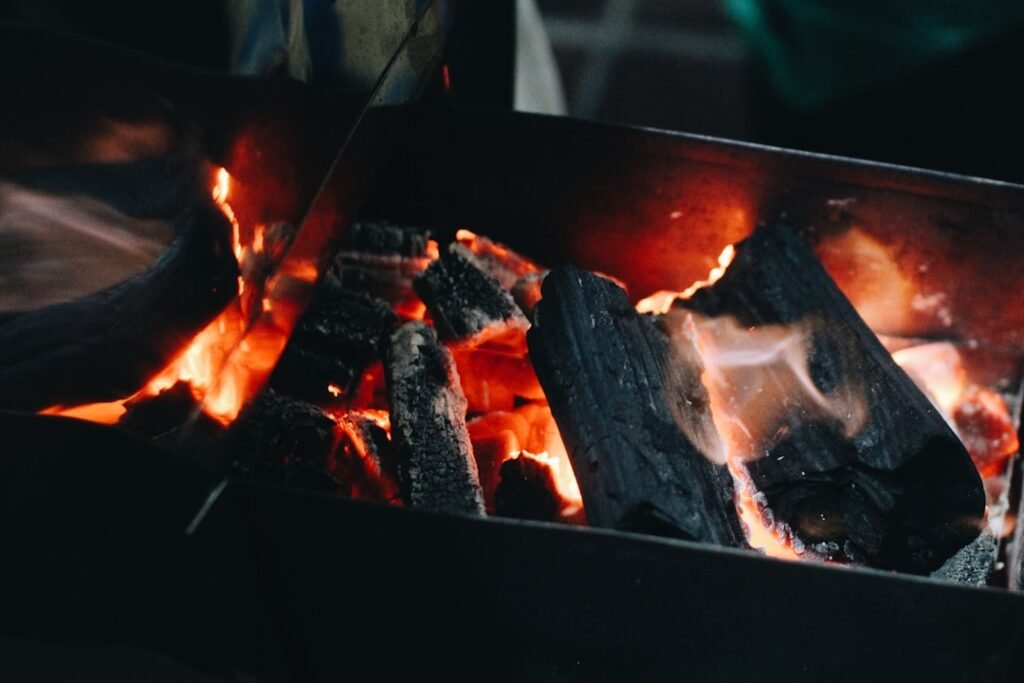Unlocking the Secret to Perfect BBQ: The Ultimate Guide to BBQ Rubs

When I think about the essence of barbecue, my mind immediately drifts to the tantalizing aroma of meats sizzling on the grill, infused with a symphony of flavors. At the heart of this culinary experience lies the often-overlooked hero: the BBQ rub. A well-crafted rub can elevate a simple piece of meat into a masterpiece, transforming it into a dish that tantalizes the taste buds and leaves a lasting impression.
The importance of BBQ rubs cannot be overstated; they serve as the foundation for flavor, enhancing the natural characteristics of the meat while adding depth and complexity. Whether I’m grilling ribs, chicken, or brisket, I know that the right rub can make all the difference between an ordinary meal and an extraordinary feast. Moreover, BBQ rubs are not just about flavor; they also play a crucial role in the cooking process itself.
The spices and herbs in a rub create a beautiful crust on the meat, known as the bark, which not only adds visual appeal but also contributes to the overall texture. This caramelization process occurs as the sugars in the rub interact with the heat, resulting in a delightful crunch that contrasts beautifully with the tender meat inside. As I apply my favorite rubs, I can almost feel the anticipation building, knowing that each bite will be a harmonious blend of smoky, sweet, and savory notes.
In essence, BBQ rubs are indispensable tools in my culinary arsenal, allowing me to express my creativity while ensuring that every barbecue gathering is a memorable occasion.
Understanding the Components of a Great BBQ Rub
To truly appreciate the art of BBQ rubs, it’s essential to understand their components. A great rub typically consists of a balanced combination of spices, herbs, and sometimes even sugars. Each ingredient plays a specific role in creating a harmonious blend that enhances the meat’s natural flavors.
For instance, paprika often serves as a base for its vibrant color and mild sweetness, while garlic powder and onion powder add depth and savory notes. I find that experimenting with different ratios of these ingredients allows me to tailor my rubs to suit my personal taste preferences and the specific type of meat I’m preparing. In addition to spices and herbs, I’ve discovered that salt is a critical component of any BBQ rub.
It not only enhances flavor but also helps to draw moisture out of the meat, allowing it to absorb the flavors of the rub more effectively. This process is known as dry brining, and it can significantly improve the juiciness and tenderness of the final product. When crafting my own rubs, I pay close attention to the balance between saltiness and sweetness, ensuring that neither overwhelms the other.
By understanding these components and their interactions, I can create BBQ rubs that not only taste incredible but also elevate my grilling game to new heights.
As I delve deeper into the world of BBQ rubs, I find myself drawn to the two primary categories: dry rubs and wet rubs. Each type has its unique characteristics and applications, making them suitable for different cooking methods and personal preferences. Dry rubs are typically composed of a blend of spices and herbs without any liquid components.
They are easy to apply and create a flavorful crust on the meat as it cooks. I often reach for dry rubs when I’m grilling or smoking meats because they allow for a more concentrated flavor profile while also forming that coveted bark. On the other hand, wet rubs introduce an entirely different dimension to my barbecue experience.
These rubs combine spices with a liquid component, such as oil, vinegar, or mustard, creating a paste-like consistency that clings to the meat. I find that wet rubs can penetrate deeper into the meat fibers, infusing them with flavor throughout the cooking process. They are particularly effective for cuts of meat that benefit from longer marinating times, such as pork shoulder or chicken thighs.
The choice between dry and wet rubs ultimately comes down to personal preference and the specific dish I’m preparing; both have their merits and can lead to delicious results when applied thoughtfully.
How to Choose the Right BBQ Rub for Your Meat

Choosing the right BBQ rub for my meat is akin to selecting the perfect wine to complement a meal; it requires careful consideration of flavors and textures. Different meats have distinct characteristics that can be enhanced by specific types of rubs. For instance, when I’m grilling beef brisket, I often opt for a robust rub featuring bold spices like black pepper and cayenne pepper to stand up to the rich flavor of the meat.
Conversely, when preparing chicken or fish, I lean towards lighter rubs with citrus notes or herbs like thyme and rosemary that complement rather than overpower their delicate flavors. Another factor I consider is the cooking method I plan to use. If I’m smoking meat low and slow, I might choose a sweeter rub with brown sugar or honey to create a caramelized crust during the long cooking process. On the other hand, if I’m grilling at high heat for a shorter duration, I may prefer a spicier rub that delivers an immediate punch of flavor without needing extensive cooking time.
Tips and Tricks for Applying BBQ Rubs
| BBQ Rub Tips and Tricks | Description |
|---|---|
| 1 | Choose the right rub for the meat |
| 2 | Apply the rub evenly on the meat |
| 3 | Let the rub sit on the meat for at least 30 minutes |
| 4 | Consider using a binder like mustard or olive oil |
| 5 | Adjust the amount of rub based on personal preference |
Applying BBQ rubs is an art form in itself, and over time I’ve developed several tips and tricks to ensure that my application is both effective and efficient. One key aspect is to start with clean, dry meat; moisture can prevent the rub from adhering properly and diminish its effectiveness. I always pat my meat dry with paper towels before applying any rub.
Once I’ve prepped my meat, I generously sprinkle the rub over its surface, using my hands to massage it in thoroughly. This not only ensures even coverage but also helps to create a flavorful crust during cooking. Timing is another crucial factor when it comes to applying BBQ rubs.
While some people prefer to apply their rub just before cooking, I’ve found that allowing it to sit for at least 30 minutes—or even overnight in some cases—can significantly enhance flavor absorption. This resting period allows the spices to penetrate deeper into the meat fibers while also giving time for any salt in the rub to draw out moisture and create a brining effect. Additionally, I often experiment with layering different types of rubs or combining them with marinades for added complexity.
By being mindful of these techniques, I can maximize flavor while ensuring that my barbecue creations are nothing short of spectacular.
The Science Behind BBQ Rubs: How They Enhance Flavor and Texture
The science behind BBQ rubs is fascinating and adds another layer of appreciation for this culinary art form. When I apply a rub to meat, several chemical reactions occur during cooking that enhance both flavor and texture. One key process is called Maillard reaction—a complex series of reactions between amino acids and reducing sugars that occurs when food is exposed to high heat.
This reaction is responsible for creating those beautiful brown crusts on grilled meats while also developing rich flavors that are often described as savory or umami. The spices in my rub contribute significantly to this reaction, as they contain various compounds that interact with heat in unique ways. Furthermore, many spices used in BBQ rubs possess antioxidant properties that can help preserve freshness while also enhancing flavor profiles.
For example, paprika contains carotenoids that not only provide color but also contribute to its distinct taste. Similarly, herbs like oregano and thyme contain essential oils that release aromatic compounds when heated, further enriching the overall sensory experience of my barbecue dishes. Understanding these scientific principles allows me to appreciate how each ingredient works together harmoniously to create mouthwatering results while also inspiring me to experiment with new combinations in my own kitchen.
DIY BBQ Rub Recipes for the Ultimate Flavor Explosion

Creating my own DIY BBQ rub recipes has become one of my favorite culinary pastimes; it allows me to experiment with flavors while tailoring each blend to suit my personal preferences. One of my go-to recipes features a base of brown sugar combined with smoked paprika, garlic powder, onion powder, black pepper, and cayenne pepper for an extra kick. This sweet-and-spicy blend works wonders on ribs or chicken wings, creating a delicious caramelized crust as they cook on the grill.
The balance between sweetness from brown sugar and heat from cayenne creates an explosion of flavor that keeps everyone coming back for seconds. Another favorite recipe involves using fresh herbs combined with citrus zest for a refreshing twist on traditional BBQ flavors. By mixing dried thyme, rosemary, lemon zest, garlic powder, salt, and black pepper together, I create a vibrant herbaceous rub perfect for fish or grilled vegetables.
The bright notes from citrus elevate these dishes while allowing their natural flavors to shine through without overpowering them. Crafting these DIY blends not only enhances my barbecue experience but also gives me a sense of pride knowing that each dish is uniquely mine.
Pairing BBQ Rubs with the Perfect BBQ Sauces for a Mouthwatering Combination
The final touch in perfecting my barbecue creations often comes down to pairing BBQ rubs with complementary sauces—a marriage of flavors that can take any dish from good to unforgettable. When I use a sweet-and-spicy dry rub on pork ribs, I love finishing them off with a tangy vinegar-based sauce that cuts through richness while enhancing overall flavor complexity. The interplay between sweet notes from both the rub and sauce creates an irresistible balance that leaves taste buds dancing.
Conversely, when working with more robust meats like brisket seasoned with bold spices such as cumin or chili powder in my dry rub recipe, I tend to gravitate towards richer sauces featuring molasses or tomato bases for added depth. This combination not only enhances existing flavors but also creates layers of taste that keep every bite exciting until the very last morsel is gone. By thoughtfully pairing my chosen BBQ rubs with sauces tailored specifically for each dish’s unique characteristics, I ensure that every barbecue gathering becomes an unforgettable culinary experience filled with mouthwatering combinations sure to impress family and friends alike.






